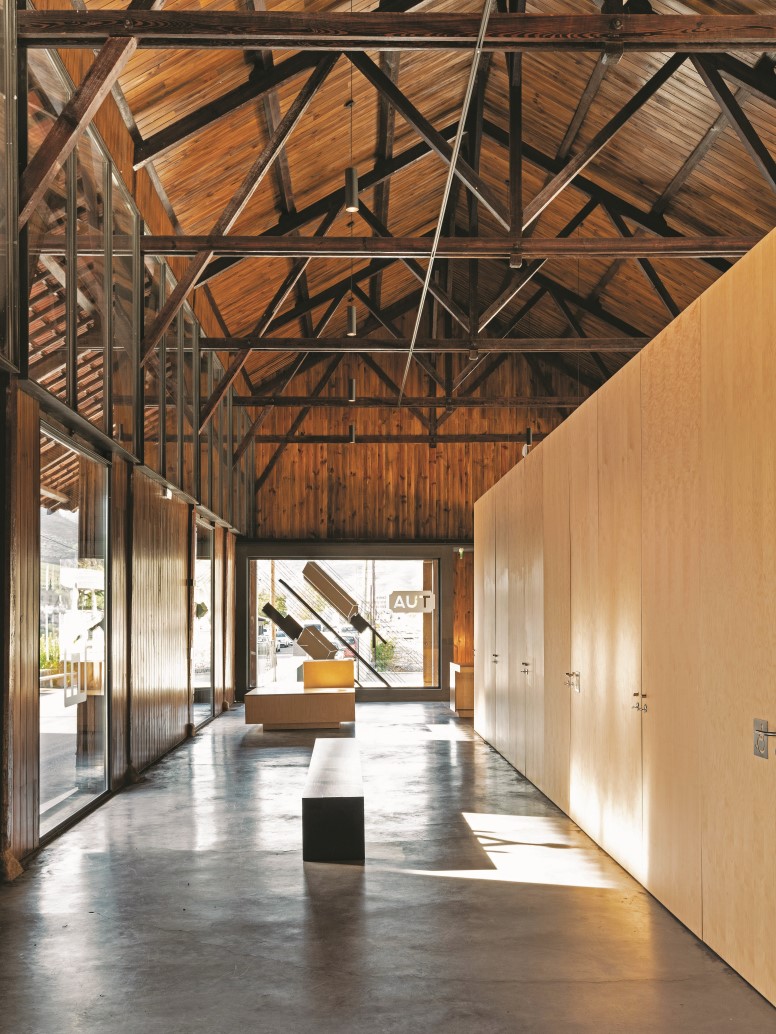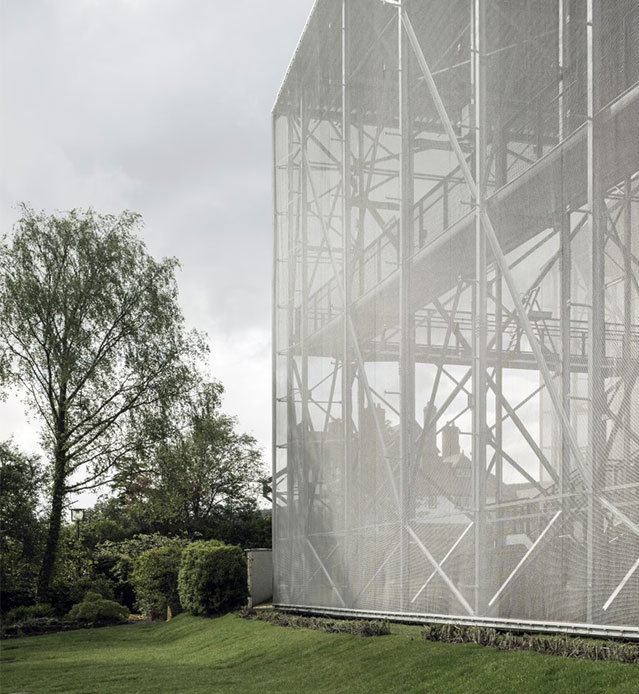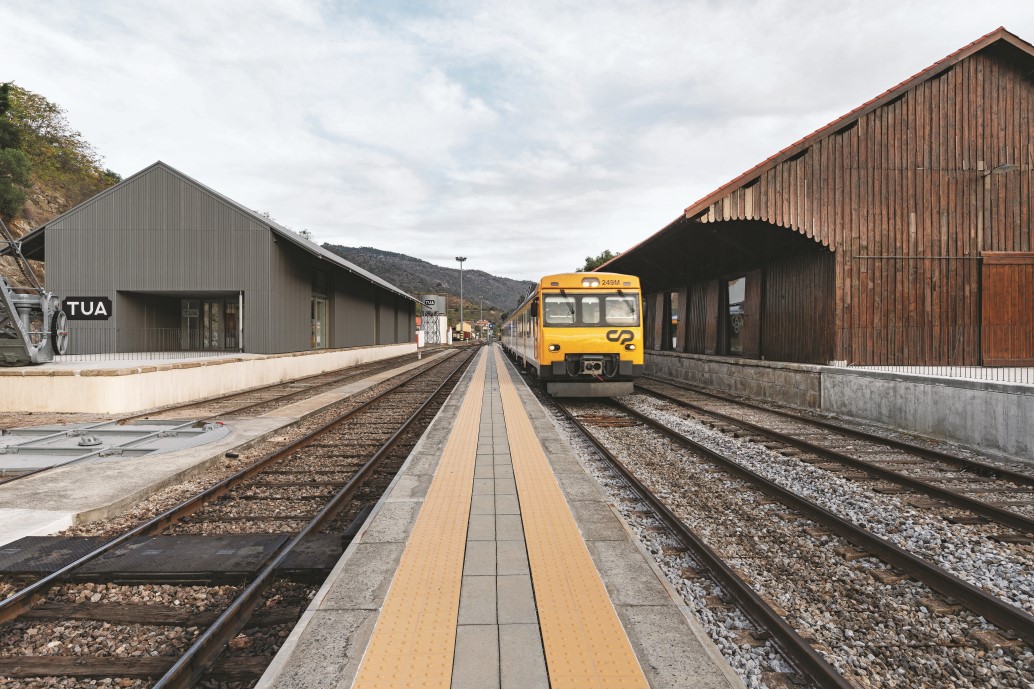Tua Valley Interpretive Centre – Rosmaninho + Azevedo Arquitectos
As we are talking about an Interpretative Center of the Tua Valley, I myself will explore two different readings /

Rosmaninho + Azevedo Arquitectos
-
Location
:Foz Tua,Carrazeda de Ansiaes, Portugal
-
Architecture
:Pedro Azevedo + Susana Rosmaninho
-
Project title
: Competition first prize
-
Project year
: 2015–2016
-
Construction year
: 2017–2018
-
Promoter
: ADRVT – Regional Development Agency of Tua Valley
-
Site area
:1200,00 sqm
-
Built area
:930,00 sqm
-
outdoor spaces area
270,00 sqm
-
Photographs
:Luis Ferreira Alves
In 1880, the opening of the Douro railway line provided an alternative to waterway transport. Travelers, but more particularly Port wines and the products necessary to produce them, benefitted from the two hundred kilometres of rail tracks connecting the Spanish border and the city of Porto. Between 1988 and 1990, the last 28 kilometres of this railway and several sections of tributary lines (including Tua), considered insufficiently lucrative, were closed. In 2008, operation of the Tua line ceased entirely. The construction of a dam on the Tua River, approved the following year and requiring 16 kilometres of railway tracks to be flooded, made any re-use of the service definitively impossible.
The creation of the Tua Valley Interpretive Centre (TVIC) was part of the compensation programme associated with the construction of the dam. Its purpose is to allow visitors to get to know the history of the valley. The TVIC is housed in two disused hangars of the Tua train station. The Rosmaninho + Azevedo architecture firm wanted to give each hangar a singular identity. The parts dedicated to photography exhibitions and welcome space took up residence in one hangar, which retained its timber envelope, a centennial building restored “board by board” and provided with the required insulation inside. Separated by train tracks, the second part of the TVIC was more comprehensively renovated, in keeping with an ambitious programme. The zinc cladding of the pavilion reconciles two almost antagonistic choices by the architects: sourcing of a material to blend with the industrial character of this venue, while at the same time expressing a noble dimension in line with the Douro’s status as a UNESCO World Heritage Site. Quartz-zinc corrugated panels were installed on the roof and facade, reinterpreting the timber hangars.
The building’s floor area was extended in keeping with the limits dictated by the circulation of trains, in order to house the entire programme. Elimination of the side platforms enabled the construction of a thick wall integrating an air gap. Positioned behind the zinc cladding, it produces natural ventilation, minimizing the use of air conditioning equipment. This transversal extension creates more space for the permanent exhibition areas housed on the ground floor of the second hangar. On the upper floor is housed the educational service and the workspaces on a mezzanine. With a substantial economy of means, the zinc skin demonstrates that it is possible to change a building completely without disrupting it, to alter use without betraying the identity of a place.
Text provided by the architects
Compensations – Arpad Zachi
In the past few days, so to say, looking for the latest housing projects designed and published on the Archdaily website (regarding the Triennale Bucharest – East-Centric Architecture 2019 with the theme «HOME | any | more | ?»), a project for a conversion of two warehouses/storage spaces of a train station drew my attention.
First impression
It surprised me pleasantly, and, at the same time, I was intrigued that for a «modest» development (in size and richness), a lot of work, passion and imagination was invested in all the aspects and stages of the project. The work shows a very good knowledge of both the tendencies and the contemporary means of approaching such a situation. I imagined (in my naivety) that we are dealing with those rare and happy encounters between a team of talented and committed architects and a conscientious and co-operant employer willing to take advantage of the architectural value of the project. In other words, a small local community that wants to adopt an up-grade by smartly using the train station and its annexes as an anchor in the process of regenerating their settlement and maybe the entire area as well.
Documentation
Trying to find that local community (from my imagination), I inevitably came across the real history of the site, not the one that was subjectively projected by me: that of the contest and of the realization of this project. In the presentations of the local officials as well as in the presentation of the authors made for the Mies Van der Rohe Prize, the phrase that drew my attention, namely the «compensation program», appeared. Compensation? Compensation for what? The term makes one think of a replacement and/or loss situation. I found out that the area, of a wild beauty and with a rich and varied ecosystem – rich flora and fauna (over 300 bird species), was affected by the construction of a dam on the Duoro Valley and will be affected also by the new dam on the Tua Valley. The railroad had lost its economic and transport importance anyway, keeping today only a touristic role. In fact, our project is
also a component/part of a comprehensive regional and economic development plan for the region. I must note the communication (of image) component is highly important and of a very good-quality in the case of this program, as well as in the Tua Valley Interpretive Center project.
As we are talking about an Interpretative Center of the Tua Valley, I myself will explore two different readings / interpretations/different perspectives on the realization, function and impact of this project.
The first interpretation
We shall observe and acknowledge the reality of the permanent evolutions, ever more complex and more accelerated, of both the economic and political context and also the social and cultural context, with major implications in (re) defining and (re)adapting the lifestyle and the frame of our lives. We are also aware that, at the level of the built frame and the set-up, every conversion, transformation, revitalization, regeneration, extension inevitably also implies some letting-go, loss, amputation, tearing. It is important that these re-arrangements should be the result of agreements (negotiation) undertaken and accepted by all the actors involved in the regeneration process (not only in what concerns the advantages, but also what is preserved and what is lost). From this point of view, I could say that the Tua Valley Interpretative Center is a valuable compensation both from the point of view of the architectural quality and also from the point of view of the functional concept. Moreover, it fills up and humanizes the vision / economic development plan of the Duoro region.
The second interpretation
This second perspective emerged from the deep need of each of us to have or to find an anchor in the form of belonging to a place, to a certainty, to a value, to a certain stability and a certain balance. Any change or evolution must ensure continuity and a natural transition from one stage to another or to others. What it really means and remains up to you (as a need, option, aspiration) is to move on and, especially, to find out where you are going to. Another very important aspect of this matter is that you should be able to come back at any given time (even virtually / in your imagination) to where you just left (or the place you wanted to leave) – as it does not matter for you whether that place is dusty, passé or anachronistic; it is the place (in) which (you) molded your own imaginary. From this perspective, the development plan has no relevance whatsoever. Instead, the architectural approach of the Center is a beautiful and nuanced commentary and a reward for what this place once was, along with a century-old train station that survives as a relic of an equally aggressive and stressful industrial development age as well as the one from today (even if the presentations and the comments are rather quiet in what concerns the latter).
 Romană
Romană English
English










